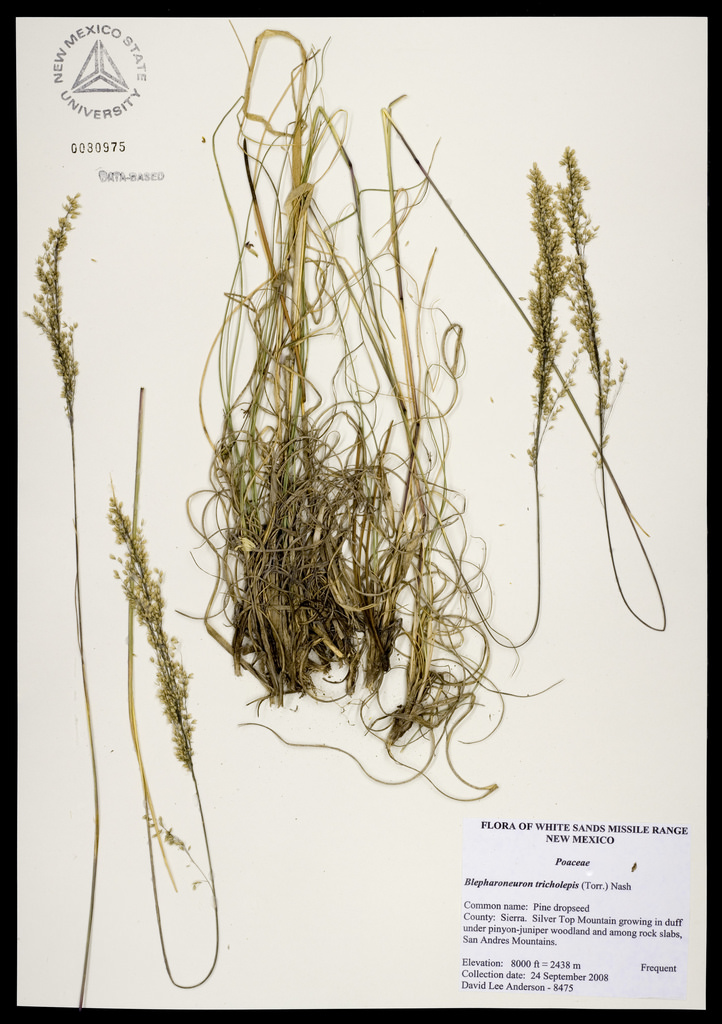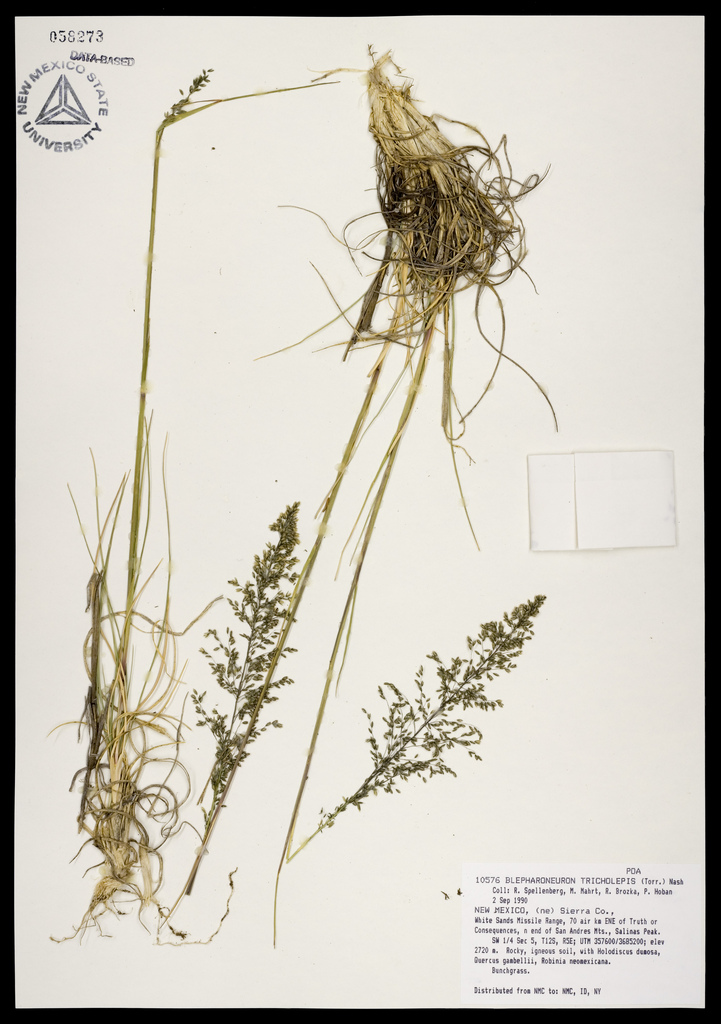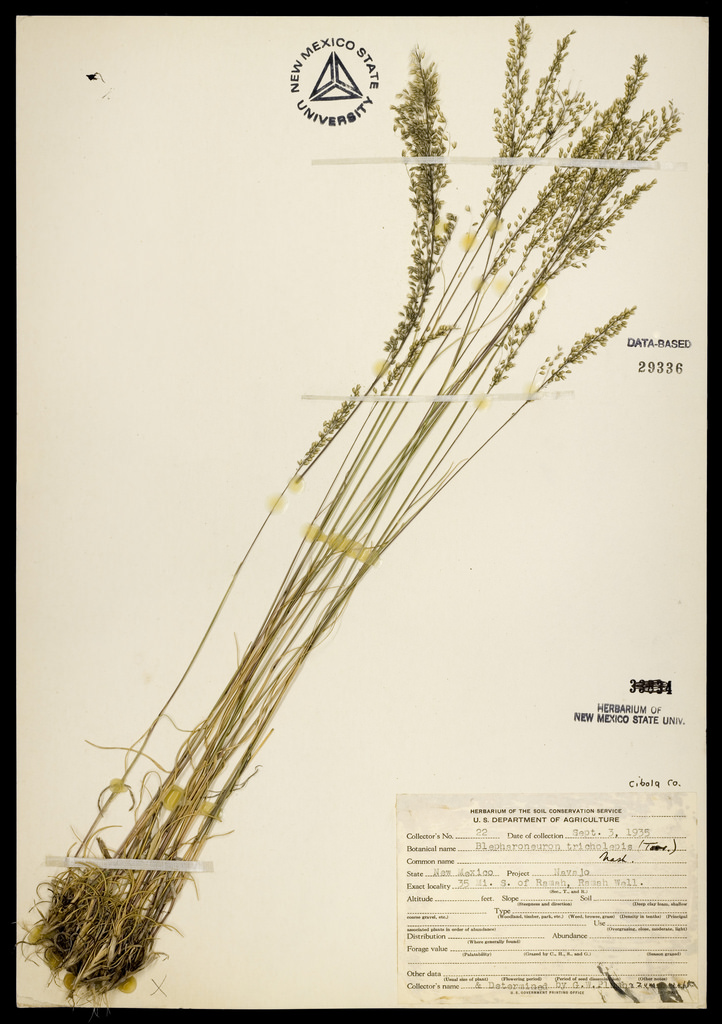Selected Plants of Navajo Rangelands
Dropseed, pine

Pine dropseed is a slender, erect, densely tufted bunchgrass growing 10 to 13 inches tall, with basal leaves and fibrous roots. It reproduces from seeds and tillers. It starts growth in late June or early July, completes growth in September, and generally comprises only a small portion of the vegetation.
The panicle-type inflorescence is 2 to 9 inches long, and can be open or contracted. Spikelets are small, containing one floret with a distinctive greenish-gray color, and with silky hairs. Pine dropseed is usually found in open parks and meadows in the subalpine zone and in the open timber of the ponderosa pine and piñon-juniper types.
The palatability and quality of young pine dropseed plants is very good for all classes of livestock. The quality rapidly declines with maturity. The stems are neglected or only slightly grazed after maturing. It is generally one of the highest quality grasses in timbered areas. A healthy pine dropseed community in areas where it is native is an indicator of rangeland in good condition.
*Description courtesy of Utah State University's Range Plants of Utah.


©2018 NMSU Board of Regents.
Individual photographers retain all rights to their images.
Partially funded by the
Western Sustainable
Agriculture Research and Education Program
(westernsare.org; 435.797.2257),
project EW15-023.
Programs and projects supported by Western SARE are
equally open to all people.